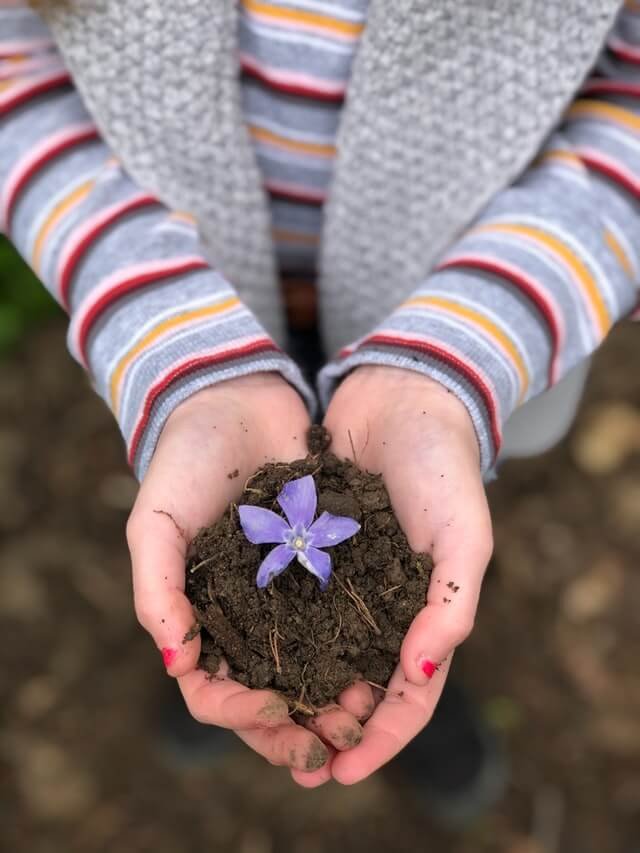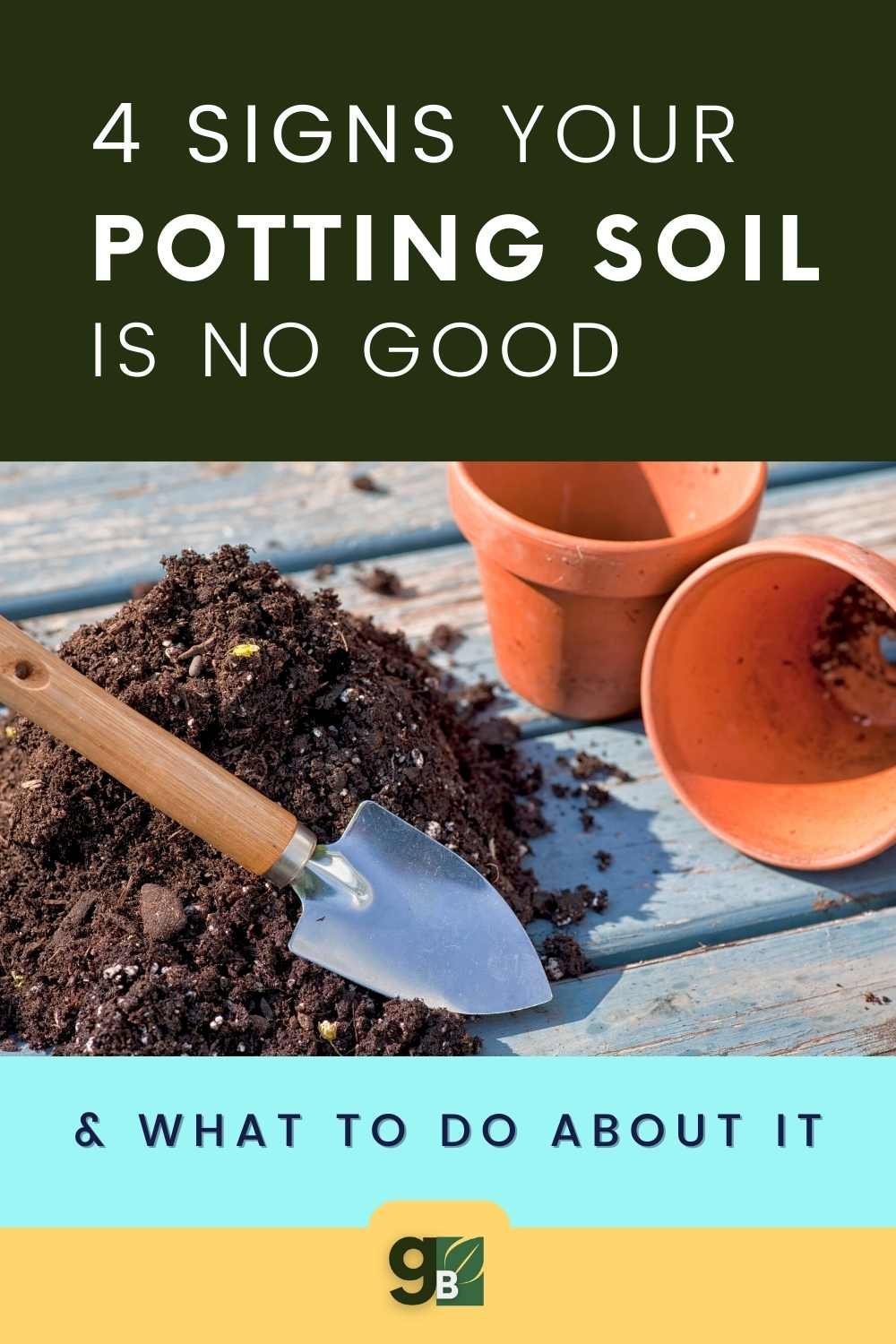Does Potting Soil Go Bad? Signs Your Potting Soil Is No Good & What To Do
Does potting soil go bad?
Potting soil is a vital component of any garden, but does it go bad over time? How long does garden soil last before it becomes unusable? In this blog post, we'll answer all your questions about potting soil and tell you what to do if you think yours has gone bad.
The items listed are accompanied by affiliate links, meaning I earn a small commission if a purchase is made through my links. This has no impact on the cost to the consumer. I link to products this way whenever possible, and it has no bearing on the products I choose to review or recommend.
What are the Ingredients in Potting Soil?
Before we can talk about whether potting soil goes bad we need to look at what it's made of. Potting soil is a mix of different materials like peat moss, perlite, vermiculite, and pine bark. This combination provides the perfect environment for plants to grow in since it aerates the plant roots and retains moisture.
Potting soil is meant to be used as a growing medium for container plants. It's different than garden soil which is the natural soil found in your yard. Garden soil is made up of sand, silt, and clay particles with organic material like dead leaves and grass clippings.
Each of these ingredients in potting soil serves a specific purpose in helping plant growth. For example, sphagnum peat moss helps to retain water, while perlite or vermiculite improves drainage and provides aeration. While pine bark retains moisture and nutrients.
A good potting soil is lightweight, drains well, and contains nutrients to feed your plants. Most potting soils will have a mix of these ingredients, but the ratio can vary depending on the type of potted plant you're growing.
Does Potting Soil Go Bad?
The real reason you are here is to get the answer to the question does potting soil go bad. The answer is it depends. Potting soil can go bad however, it does have a long shelf life. A lot of times you may not even need to replace your soil mix you may just need to add some fresh ingredients.
There are a few signs that your potting soil has gone bad and we'll go over those next.
RELATED: 8 Common Soil Problems and Solutions
4 Signs Your Potting Soil Is Bad
There are 4 signs that your potting soil is bad and needs to be replaced or amended.
Bad Smell
One of the first signs that your potting soil has gone bad is if it starts to smell. If you notice a rotten egg smell coming from your potting soil, it's a sign that it's gone bad.
The bad smell is caused by bacteria and fungi that are breaking down the organic matter in the soil. It still can be used if you spread it out on a tarp and let it bask in the sun. The sun will help to kill bacteria and fungi. Although some say this could also potentially destroy some of the nutrients in your potting soil.
If you don't want to go through the effort of trying to save it, I would buy new potting soil.
Pests and Insects
If there are pests and insects in your potting soil it's a sign that your potting soil has gone bad. Bugs and other pests are attracted to decaying organic matter which is a sure sign that your potting soil is no good.
Fungus gnats are a common type of insect that is attracted to potting soil. While harmless to humans, the fungus gnat can harm your plants by eating their roots.
To get rid of pests and insects in your potting soil, you can let it dry out for a few days. This will kill most of the bugs since they like moist soil. You can also add diatomaceous earth diatomaceous earth to your potting soil which will kill any remaining bugs.
While you can try to salvage your potting soil, it's probably best to start with fresh potting soil to be safe.
It Grows Mold
Mold is another sure sign that your potting soil has gone bad. Mold usually grows on the surface of the potting soil and can be white, gray, yellow, or green. It can also be fuzzy or have a slimy texture.
Mold will often form if the potting soil is too moist or has been wet for too long. If you see mold growing on your potting soil, let it dry out for a few days and then check it again. If the mold is still there, you will need to throw away the potting soil and start fresh.
You definitely don't want to use potting soil that has mold growing on it, it can cause root rot and dampening off in young seedlings.
Dense Texture
Another sign that your potting soil has gone bad is if it starts to form clumps. This usually happens when the peat moss in the potting soil starts to decompose. Without organic matter, the potting soil will compact and become dense over time.
When this happens, it can cause drainage problems and make it difficult for roots to grow. If you notice your potting soil is starting to form clumps, I would mix in some organic matter such as compost or peat moss.
In addition to these four signs, you can also check the expiration date. That will give you an idea of how long you have had the potting soil and how long it should last.
The expiration date is not the end-all-be-all though. If you have had your potting soil for longer than the expiration date and it doesn't show any signs of going bad, it's probably still fine to use.
Can I Use Old Potting Soil? What Will Happen If You Do?
You can still use potting soil after the expiration date, but it may not be as effective. The nutrients in the old soil will start to degrade over time and it won't be able to retain water as well. Your plants won't grow as well as if you used fresh potting soil.
If you have potting soil that is more than a few years old, I would recommend getting new potting soil. It's cheap and it will be worth it in the long run. Your plants will be healthier and grow better if you use fresh soil.
If you do plan on using it, just be sure to check it for any signs of going bad before using it. And if you do notice any, I would recommend getting new potting soil.
It's always better to be safe than sorry when it comes to your plants!
Ways to Repurpose Old Potting Soil
Just because your potting soil is older doesn't mean you have to throw it away. There are still some ways you can repurpose old potting soil.
One way you can reuse old soil is to add it to the compost pile. Composting is a great way to recycle old soil and give your plants some of the nutrients they need. The compost pile will also help keep your garden soil healthy.
Another way to add nutrients and improve the quality of your soil is to use worm castings. Also known as vermicompost, worm castings are a type of organic fertilizer made from the excrement of earthworms. While you can purchase worm castings from a gardening store, you can also make your own at home using old potting soil.
To do this, simply place a layer of old potting soil in the bottom of a bin or container, and then add earthworms. The earthworms will eat their way through the potting soil, and their waste will enrich the soil with nutrients. After a few months, the potting soil will be transformed into rich, black worm castings that you can use to fertilize your plants.
How to Store Potting Soil
If you have potting soil that you plan on using later, it's important to store it properly.
If the potting soil is already opened, the first thing you need to do is make sure the unused potting soil is completely dry. If there is any moisture in the potting soil, it will start to form mold and mildew, which can damage the quality of the potting soil. Dry it out and then store it in a plastic container with a lid or an unscented trash bag.
If you have unopened bags of potting soil, it's best to store them in a cool, dark place like a garage or shed. Storing them in a cool, dark place will help the potting soil last longer.
Unopened bags of potting soil can last for 1-2 years if kept correctly.
An opened soil bag will maintain optimal quality for around 6-12 months.
Tips on How to Revive Your Old Potting Soil
If your soil needs a little love, here are some tips on how to revive your old potting soil:
- Add some organic matter to the soil, such as compost or manure. This will help to add nutrients and improve the quality of the soil.
- Add some perlite or vermiculite to the soil to improve drainage and aeration.
Pin for later!
- You can also add some compost or worm castings to the soil to give it a nutrient boost.
-If the soil is dense add some peat moss or Coconut coir to help with aeration.
By following these tips, you can revive your old potting mix and make it usable again.
FAQS About Potting Soil
How Long Does Unopened Potting Soil Last?
If stored properly, an unopened potting soil bag can last for 1-2 years.
How Long Does Opened Potting Soil Last?
Opened potting soil will maintain optimal quality for around six to twelve months.
Do I Need To Replace Potting Soil Every Year?
No, you don't need to replace potting soil every year. However, it's a good idea to replenish the nutrients in the soil every year or two by adding compost. You may also need to add more perlite and peat moss to the soil to improve drainage and aeration.
Can Potting Soil Get Moldy?
Yes, potting soil can get moldy if it's not stored properly. Mold and mildew will form if there is any moisture in the potting soil. To prevent this, make sure the potting soil is completely dry before storing it in a plastic container with a lid or an unscented trash bag.
The Verdict on Does Potting Soil Go Bad
Potting soil does go bad, but it doesn't happen overnight. With proper storage, potting soil can last for years. However, over time the quality of the potting soil will degrade and it will need to be replenished with nutrients. Older potting soil can be revitalized by adding compost, perlite, and peat moss. So, if you're wondering does potting soil go bad, the answer is yes - but it doesn't have to be thrown out immediately. With a little TLC, your old potting soil can be used again.

















